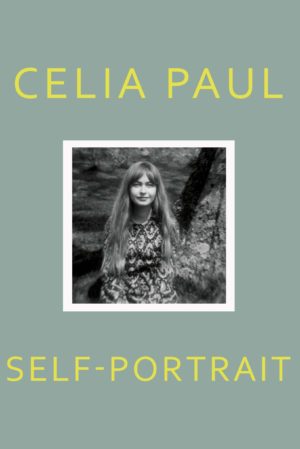Self-Portrait
by Celia Paul
reviewed by Hall W. Rockefeller
The artist biography is an easily justified genre—the glamorized, fraught lives of artists are ripe for a good story. But what about the artist memoir? After all, like a poet reading aloud her own poems, the artist is often the wrong person to ask to explain her work. What can be said of the artist’s life in words that hasn’t yet been said (better) in paint?
For the gossips among us, the appeal of Celia Paul’s memoir Self-Portrait might be its first-hand account of the artist’s ten-year relationship with the more famous painter (both then and now) Lucian Freud, a billing that has been promoted by publisher and headlines alike—guided by the assurance, presumably, that sex sells.
But the gossips will be disappointed. As the title unabashedly suggests, the subject of this book is Paul herself, and the depiction of her relationship with Freud (with whom she had a son in 1984) is more anxious and uncomfortable than it is salacious. In the first of two chapters entitled “Lucian,” Paul calls attention to his “small head,” “lizard-green” eyes, and a face the “texture of wax,” describing him during one of their first romantic encounters as “lonely and needy and strange.” Paul calls his initial foray into her classroom at London’s Slade School of Fine Art, where they met, a “great stage entrance,” but the scene itself lacks bravado. Freud often seems too interested in himself to carry the story, and, in his case, the paintings can do all the talking for him.
But in Paul’s case, her own explanation seems necessary. In an early chapter, “Linda,” (sandwiched between the two “Lucian” chapters), Paul reflects on her adolescence and its impact on her future as an artist. In describing a fierce rivalry she had with one of her fellow art pupils in grade school, Paul reveals the influence that competition had on her as a young painter. The result is a more nuanced image than the lone genius trope, which has attached itself mightily to male artists. Richly illustrated with her own words and a few of Freud’s images of her, along with the artist’s diary entries and original poetry, Self-Portrait shines in these moments of frank reflection.
Freud and Paul are an unstable pairing. The painter communicates her claustrophobia in the relationship: in a basement room with two caged finches given to her by Freud as a gift, Paul waits for her lover’s call, often made anxious by her uncertainty and her undeniable passion for the older artist. She writes: “I felt how homesick the birds must be, and I was unsettled by the rattling of the bars as they fluttered in their cage. I felt imprisoned, too.”
Though Freud dominates the first half of the memoir, Self-Portrait soon gives way to a more interesting combination of characters. When the artists’ son Frank is born, the narrative shifts and, in some ways, stabilizes. Paul leaves her young son to be raised by her mother in Cambridge, traveling from London to visit the pair frequently. The triangle of mother, child, and grandmother offers not a solution, but at least a refuge from the frenetic buzz of Freud’s awkward but magnetic presence.
On the occasion of Self-Portrait’s UK release in 2019, the novelist Rachel Cusk asked, “Can a woman who is an artist ever just be an artist?” and explores the question in an eponymous article for the New York Times Magazine. (Cusk refers to her subjects–both Celia Paul and painter Cecily Brown–by their first names throughout, undermining the possibility of a “yes” answer to this question.) Though Cusk ultimately concludes “no,” what she misses is the defining argument of Self-Portrait: that a true artist can access an unselfconscious space from which she makes her art. Paul’s memoir renders Cusk’s question if not moot, then simply uninteresting.
Paul works out of an unadorned apartment four flights above street level and overlooking the British Museum. Here she paints the people closest to her: her four sisters, her mother (until her death in 2015), her son, her husband, and, of course, herself. Cusk characterizes this space as a prison cell, though it is notably the opposite of the basement the artist began her story in, trapped like her birds. Paul herself describes aspects of her flat with spiritual words: “sacrosanct,” “hallowed,” “mystical,” “soothing”—nothing so concrete as a cage.
Is Paul, in this space, in any way a woman? While she does note that female sitters are easier to work with (“Women,” she writes, “find it easier to sit still and think their own thoughts … For this reason I usually feel more peaceful when I’m working from a woman, and more free”) it is not because she finds them to be sympathetic to her own femaleness, but because they retreat into themselves. It is in the freedom she finds there that she becomes an artist. Full stop.
Published on March 31, 2021

